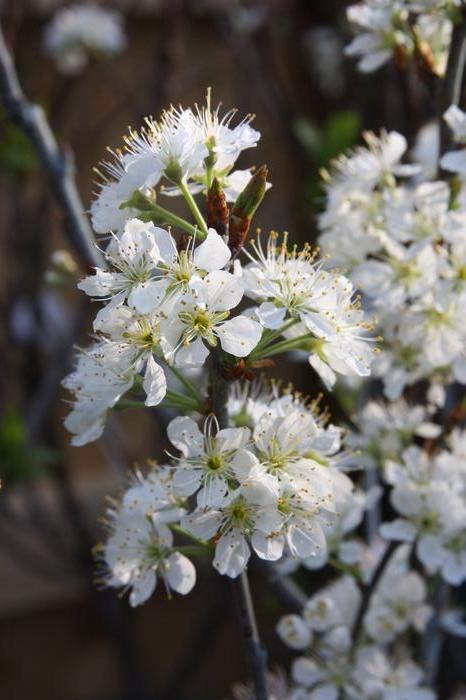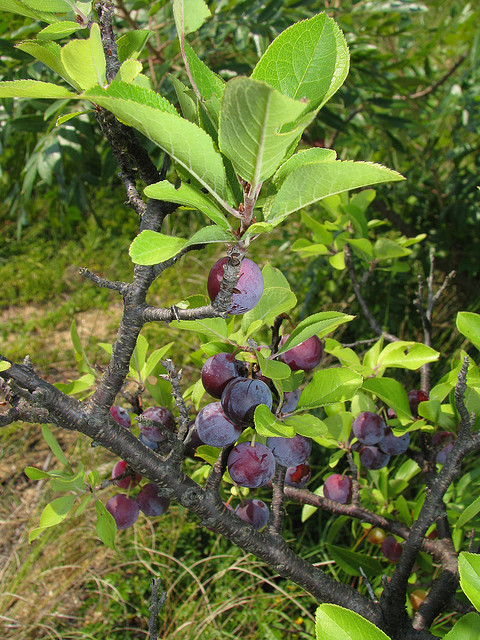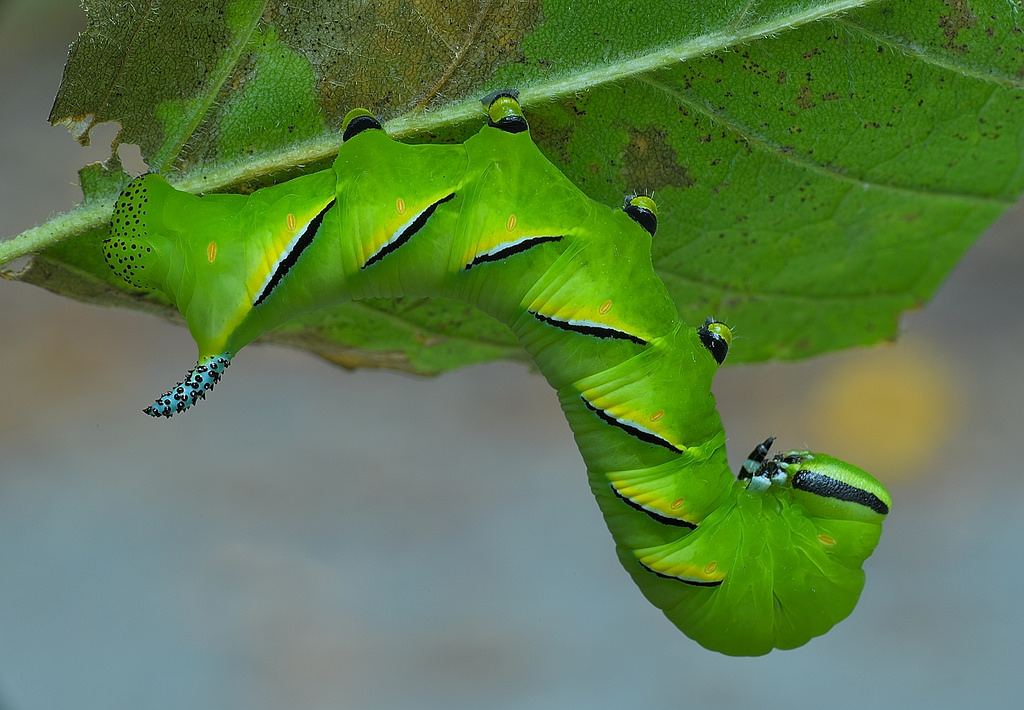Beach Plum
Prunus marítima Marshall
Description
Also called seaside plum, sand plum, and graves plum, this is a member of the rose family (Rosaceae) ¹. Usually a multi-stemmed shrub, beach plum can grow up to 18 feet ¹. Its reddish-brown stems have conspicuous horizontal lenticels when young but becomes rough with age ¹. The leaves are oval shaped and up to 2.75 inches long with finely serrated margins ¹. They are dark green above and finely hairy on the lower surface ¹. The flowers appear before leaf out in early spring and are white, one-half inch across and occur singly or in small groups ¹. Individual plants are self sterile ². The dark purple fruits may be up to one inch in diameter and mature in late summer ¹.

Flowers of beach plum. 4

Beach plum fruit and leaves. K. WIxted, Maryland Biodiversity Project ³
Distribution
Beach plum occurs along in sand dunes along the Atlantic coast from Canada to Virginia ¹. It is intolerant of flooding and is naturally found in areas protected from salt spray such as mature sand dunes ¹. It can be planted in other well drained, sunny areas ¹. Beach plum is considered endangered in Maryland³ as well as in Maine and Pennsylvania ¹. In Maryland it occurs from Anne Aruncel to St. Mary’s County on the Western Shore and in Kent and Worcester Counties on the Eastern Shore ³.

Distribution map of beach plum 5
Wildlife Importance
Beach plum thickets provide a nesting location for Glossy Ibis as well as food for numerous bird species ¹. It is pollinated by bees and numerous other insects ¹. It is a host plant to the Laurel Sphinx Moth ³.
Laurel Sphinx Moth larva. B. Cammarata, Maryland Biodiversity Project 6

Adult Laurel Sphinx Moth. M. Tillett, Maryland Biodiversity Project 6
Economic Importance
Beach plums are used commercially for producing jams and jellies ¹. It is also used for horticultural purposes due to its ability to grow in poor nutrient, sandy soils ¹. Beach plum can have high ornamental value ².
Threats
Beach plum is susceptible to several insect pests including the plum gouger, plum curculio and European red mite ². The plumb gouger can reduce the fruit yield by one half ². Several fungus infections affect beach plum include plum pockets, brown rot and lead spot ².
Interesting Facts
- The flowers turn from white to a slight pink hue upon successful pollination ¹.
- Beach plum can produce adventitious roots from stems that enable it to survival burial in sand dunes ¹.
- Beach plum sets flowers each year, but bears fruit only once in every three or four years ².
References
- USDA NRCS Plant Guide: Beach Plum
- University of Maryland Extension: The beach plum
- Maryland Biodiversity Project: Beach plum
- Native Plant Trust: Prunus maritima
- Greenfield Community College–Outdoor Learning Lab: Prunus maritima
Contributed by J. Hull
